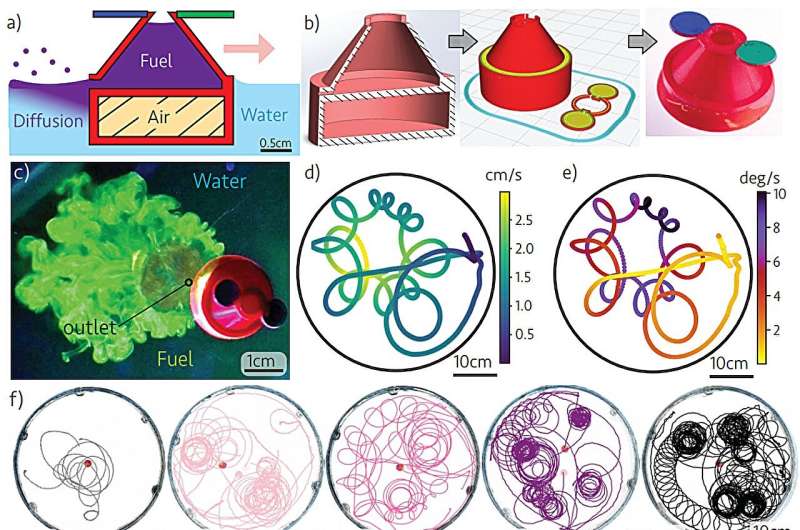The 3D-printed particles that propel themselves across liquid surfaces using a simple alcohol fuel, leveraging the Marangoni effect, could revolutionise chemical dispersion and environmental cleanup, showcasing the power of physics-driven engineering.

A team of physicists from the University of Amsterdam has unveiled 3D-printed particles capable of self-propulsion across fluid surfaces, powered by a fuel source. This leverages the Marangoni effect, a well-known physical phenomenon where fluids with differing surface tensions spread rather than mix. The researchers constructed these particles in a hockey puck-like shape, each about 1 centimeter in diameter. By 3D printing them as hollow structures, they ensured the particles could float on water. The hollow core functions as a “fuel tank,” where alcohol is stored.
A tiny pinhole in the particle allows the alcohol to escape gradually into the surrounding fluid. This release triggers the Marangoni effect, as the alcohol spreads across the water’s surface, dragging the particle along.
Performance tests demonstrated that the strength of the alcohol fuel directly impacts the speed of the particle. The fastest particle achieved a velocity of approximately 6 centimeters per second, and movement could be sustained for up to 500 seconds.
Larger particles were also tested successfully, and multiple particles on the fluid’s surface exhibited the “Cheerio effect,” where objects floating on a liquid attract each other and move collectively.The team sees significant potential in these self-propelling particles for practical applications. For instance, they could inspire advanced environmental cleanup strategies by guiding the targeted dispersion of cleaning agents across contaminated surfaces. Similarly, particles equipped with secondary reservoirs could evenly distribute chemicals across fluid surfaces, offering a more efficient alternative to traditional mixing methods.
This research not only highlights the versatility of 3D printing but also demonstrates the untapped potential of physical principles like the Marangoni effect in developing innovative solutions. As researchers refine these self-propelling particles, their use could extend into fields ranging from environmental management to chemical processing. This small but powerful technology underscores the intersection of physics, engineering, and environmental innovation.






